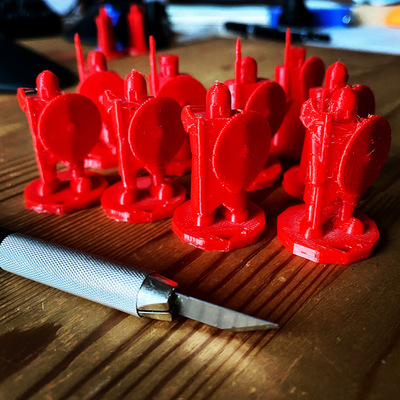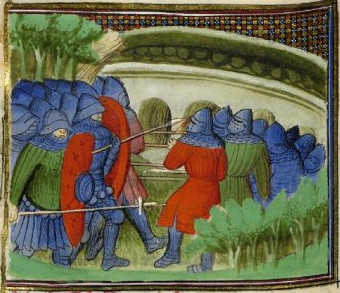
|
Fight Another Day |
| 2021-09-07 |
Fight Another Day

Even the most realistic and immersive re-enactment lacks the stark-naked terror of a violent death that dominates many of the more candid accounts of modern combat. This means individuals on a simulated battlefield are a less fearful than real life. Despite this, the side that is losing normally is forced backwards and when a unit disintegrates due to casualties, the survivors often run to the edge of the battlefield in order to 'survive'.
Interestingly, live role-players can offer some further insight into morale. Their game world is all about characters developing and therefore individual survival is built into their thinking. They want to win, but not at any cost.
I saw a stockade being attacked by two units about fifteen strong. One of the groups was live role-players, the other group were experienced re-enactors. The defenders dropped a section of wall and retreated from it in apparent confusion and fear. The two units saw the opportunity and stormed the walls, only to find it was a trap with more defenders advancing around their flank outside the walls. The unit with the live role-players seized the gate to get out and then rapidly retreated. The other unit of re-enactors formed a shield wall and were 'massacred'. The after-action review highlighted the differences in philosophy between the two groups.
I found this passage in A Practical Guide to Medieval Warfare, subtitled Exploring History through Wargaming. I am in the middle of it, I like it a lot, and I wish a friend of the authors would help them proof reading it. It feels like a Word document printed by Amazon. Maybe it is just that. But there are many gems in it.
The story above compares role-players and re-enactors. I have the impression that the shield wall was the formation the re-enactors drilled the most and they fell back to it, could it have been a "freeze" re-enaction? The players seem to have been willing to keep on playing and quickly extracted themselves, trickling out like water. The re-enactor group integrated into a dead-end shieldwall while the role-player group disintegrated but not too completely, as a nucleus formed to seize the mouth of the bag and keep it open long enough.
In order to win, one must not lose. In order to not lose, one must play. The balance may be tilted, favouring players over actors.
2022-01-08 Update
Xaosseed has written a review of this book on his blog Seed of Worlds.
